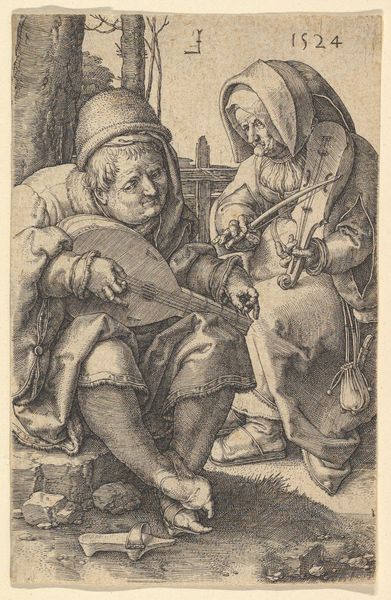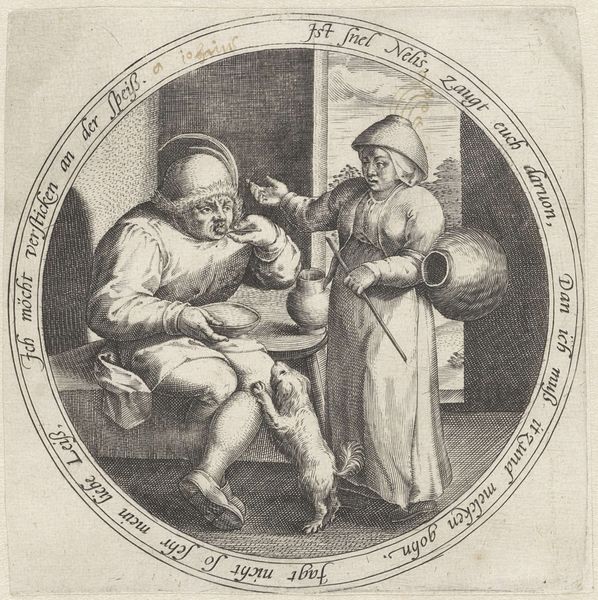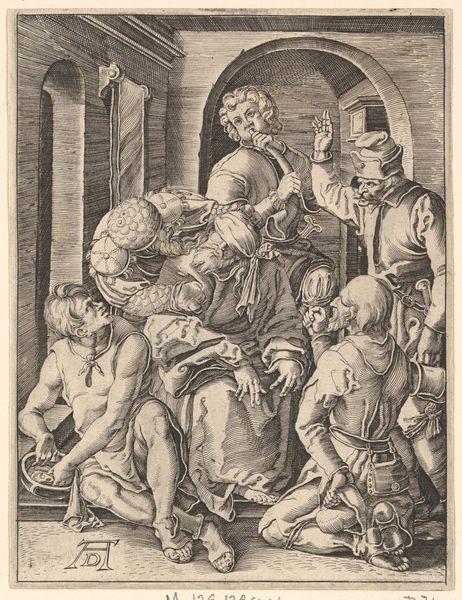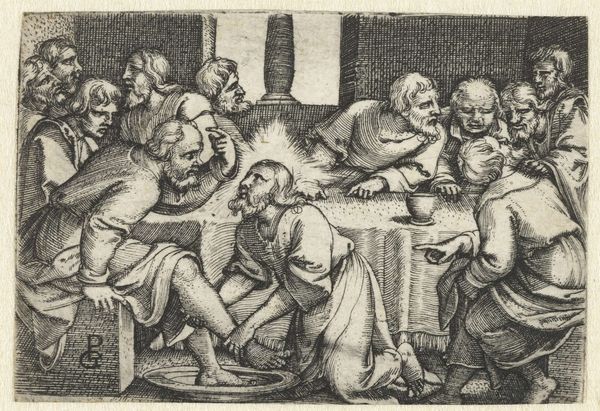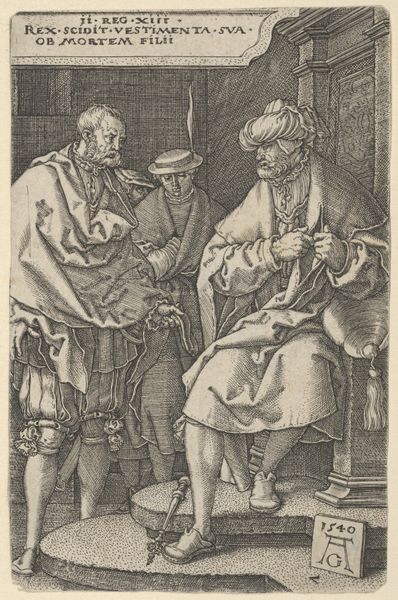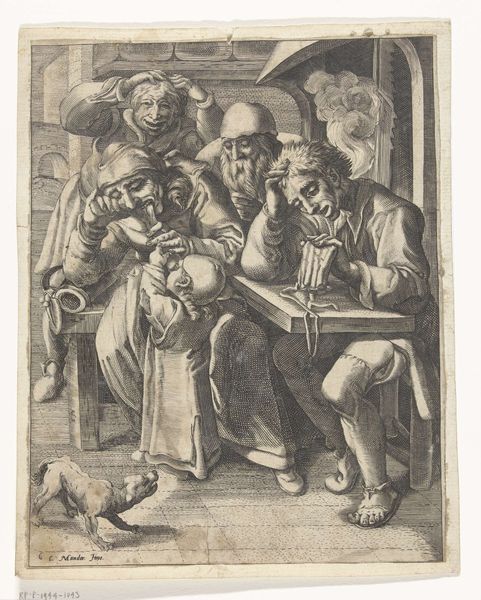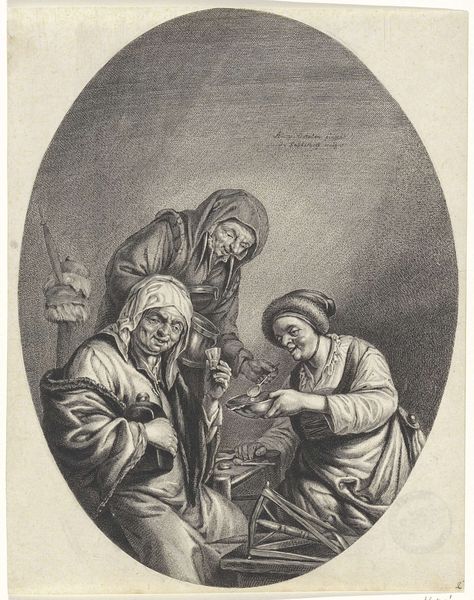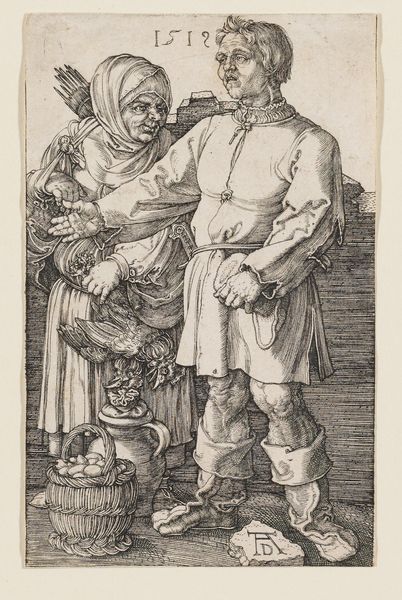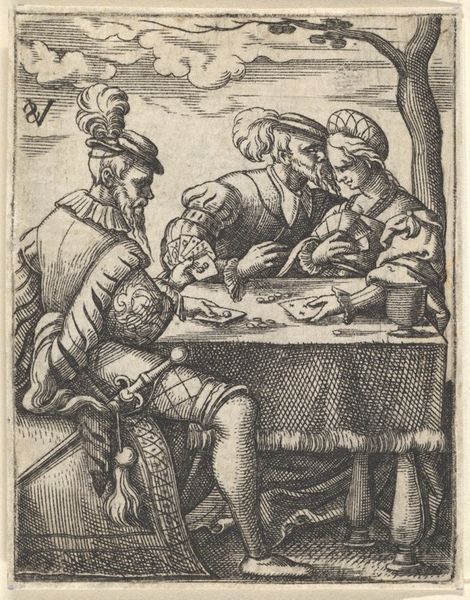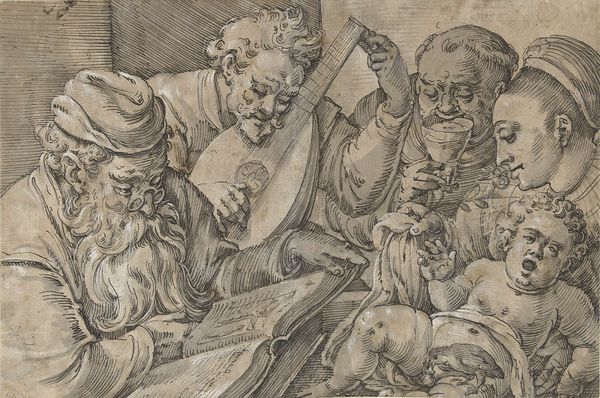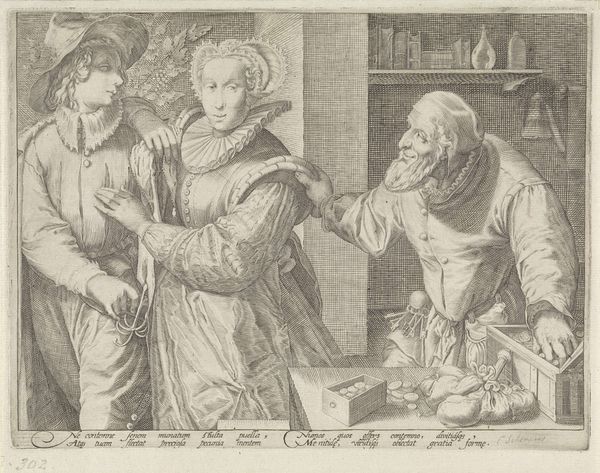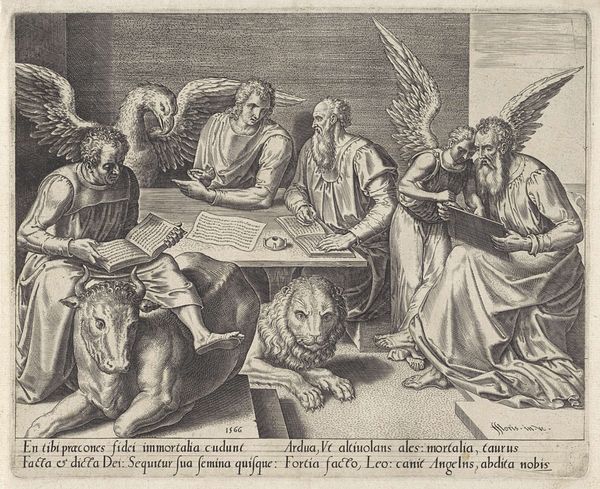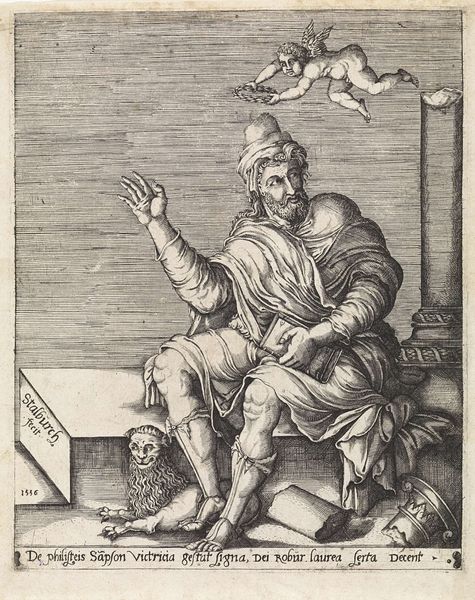
De filosofen Herakliet en Demokriet met een wereldbol 1589 - 1626
0:00
0:00
#
facial expression drawing
#
pencil sketch
#
caricature
#
junji ito style
#
personal sketchbook
#
portrait reference
#
pen-ink sketch
#
portrait drawing
#
tattoo art
#
pencil art
Dimensions: height 110 mm, width 138 mm
Copyright: Rijks Museum: Open Domain
Editor: So here we have "The Philosophers Heraclitus and Democritus with a Globe" by Bartholomeus Willemsz. Dolendo, sometime between 1589 and 1626. It's currently in the Rijksmuseum. I'm struck by the contrast in their expressions – one grinning widely, the other looking rather glum. How do you interpret this work? Curator: This print offers a fascinating glimpse into the visual culture of its time and the role that images played in shaping public perceptions of philosophical ideas. The stark contrast in the figures' expressions immediately invites us to consider how the artist is positioning these two figures. Heraclitus, weeping, and Democritus, laughing, were commonly used to represent contrasting views of the world. It seems this contrast provided a visually accessible means to engage with complex philosophical concepts for a broader audience. Do you notice the globe? Editor: Yes, they both have their hands on it. What does it symbolize here? Curator: In the context of the period, a globe often represented worldly knowledge and human understanding. The contrasting emotions suggest divergent responses to this knowledge. Perhaps, the artist critiques the very nature of knowledge production and its accessibility. Do you see anything else noteworthy about how the philosophers are presented, considering their social roles? Editor: Well, they are both wearing similar hats and clothing, and look…common. They’re not idealized at all. It is an accessible view of philosophy, a sort of democratizing image. Curator: Precisely. The artist has positioned philosophy as a subject of public discussion rather than confined to elite intellectual circles, making these great thinkers relatable to the everyday observer. Editor: I see! It’s fascinating how an image can reflect such complex societal attitudes. Thanks! Curator: Indeed! And that’s why analyzing art within its historical context allows us to uncover its role in shaping cultural values and societal discourse. A truly enriching conversation!
Comments
No comments
Be the first to comment and join the conversation on the ultimate creative platform.
